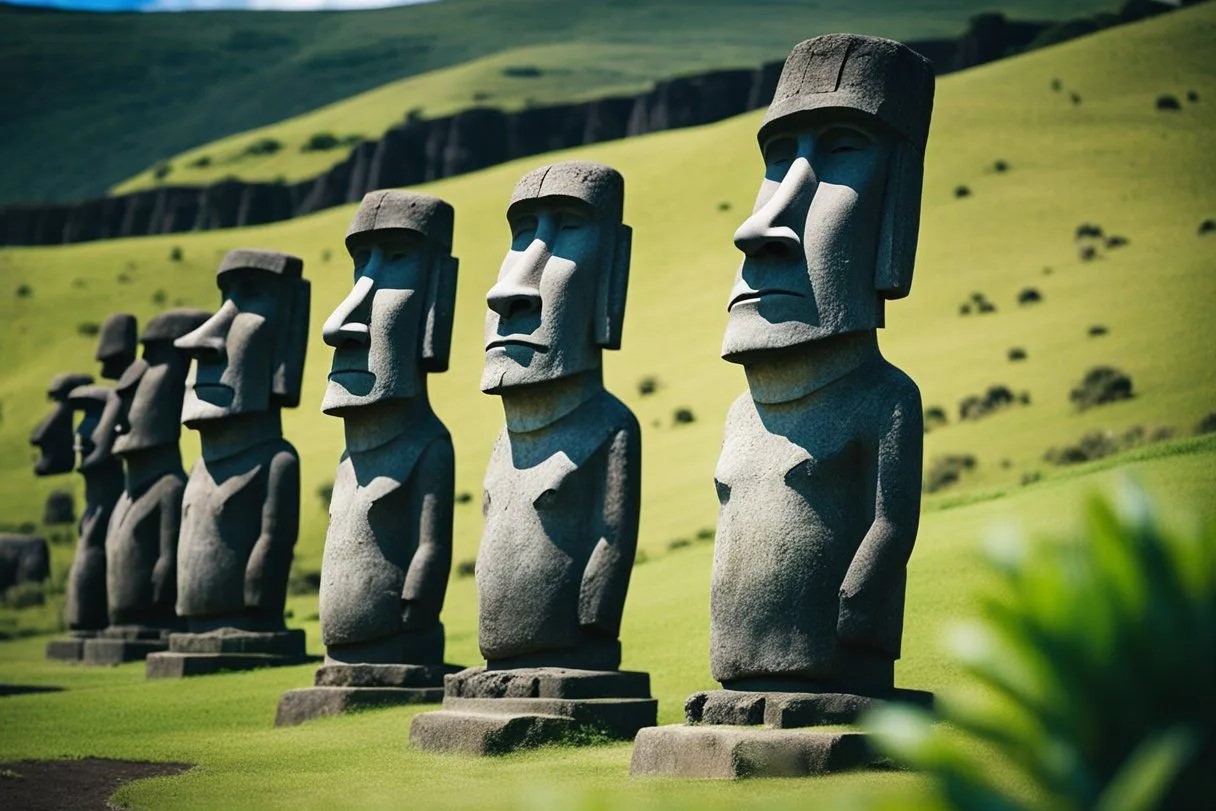Secrets Of The Easter Island Moai Statues

Ever wondered about the mystery behind the Easter Island Moai statues? These giant stone figures have puzzled historians and travelers for centuries. Located on a remote island in the Pacific Ocean, the Moai statues stand as silent guardians of a lost civilization. Each statue, carved from volcanic rock, has its own unique features and expressions. But why were they built? How were they moved across the island? And what do they represent? Join us as we uncover the secrets of these ancient marvels and learn about the culture that created them. Get ready to be amazed by the history and mystery of Easter Island.
The Mystery of the Moai Statues
Easter Island, or Rapa Nui, is famous for its Moai statues. These giant stone figures have puzzled historians and archaeologists for years. Let's explore some of the secrets behind these fascinating monuments.
How Were the Moai Statues Made?
Creating these statues was no small feat. The Rapa Nui people used simple tools and a lot of manpower to carve these impressive figures.
- Quarrying the Stone: The stone used for the Moai came from a volcanic crater called Rano Raraku. Workers chiseled the statues directly out of the rock face.
- Carving the Details: Once the rough shape was formed, artisans carved the finer details, like facial features and hands.
- Transporting the Statues: Moving these massive statues, some weighing up to 82 tons, was a huge challenge. Researchers believe they used a combination of ropes, logs, and human strength to "walk" the statues to their final locations.
The Purpose of the Moai Statues
Why did the Rapa Nui people go to such lengths to create these statues? The answer lies in their culture and beliefs.
- Ancestor Worship: The Moai are believed to represent important ancestors. They were placed on stone platforms called ahu, which served as tombs for the people they honored.
- Status Symbols: The size and craftsmanship of a Moai could indicate the status and power of the person it represented. Larger statues meant greater prestige.
- Spiritual Protection: Facing inland, the Moai were thought to watch over the island's inhabitants, providing spiritual protection and blessings.
The Decline of Moai Construction
The construction of Moai statues eventually came to a halt. Several factors contributed to this decline.
- Resource Depletion: The island's resources, like trees and stone, became scarce. This made it difficult to continue building and transporting the statues.
- Social Changes: As resources dwindled, the society on Easter Island faced internal conflicts and changes in leadership. This shift in priorities led to the end of Moai construction.
- European Contact: The arrival of Europeans in the 18th century brought diseases and new challenges to the Rapa Nui people, further disrupting their way of life.
Modern Efforts to Preserve the Moai
Today, efforts are underway to preserve these incredible statues for future generations.
- Restoration Projects: Archaeologists and conservationists work together to restore and protect the Moai. This includes repairing damage and preventing further erosion.
- Cultural Education: Educating both locals and tourists about the significance of the Moai helps ensure their preservation. Respecting the cultural heritage of the Rapa Nui people is crucial.
- Sustainable Tourism: Encouraging responsible tourism practices helps protect the island's fragile environment and its historical treasures.
The Moai statues of Easter Island remain one of the world's most intriguing mysteries. Their creation, purpose, and preservation continue to captivate and inspire people around the globe.
The Enduring Mystery of the Moai Statues
The Moai statues of Easter Island continue to fascinate and puzzle people worldwide. These massive stone figures, carved by the Rapa Nui people, stand as a testament to human ingenuity and determination. Despite numerous studies, many questions about their creation, transportation, and purpose remain unanswered. Theories range from religious significance to representations of ancestors, adding to their allure. Visiting Easter Island offers a unique opportunity to witness these incredible monuments up close and ponder their mysteries. Whether you're a history buff, an archaeology enthusiast, or just curious, the Moai statues provide a captivating glimpse into a past civilization's achievements. Their enduring presence on the island serves as a reminder of the incredible feats humans can accomplish, even with limited resources. The Moai statues are not just relics; they are symbols of a rich cultural heritage that continues to inspire awe and wonder.

